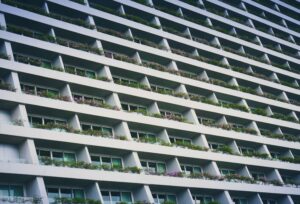What Businesses Should Know About Living Buildings
 Living buildings are a unique, environmentally friendly twist on traditional commercial structures. Businesses considering investing in them should know the logistics behind the process, if they can construct one and what benefits they offer.
Living buildings are a unique, environmentally friendly twist on traditional commercial structures. Businesses considering investing in them should know the logistics behind the process, if they can construct one and what benefits they offer.
What Are Living Buildings?
Living buildings are structures that incorporate greenery into design and operation. Many types exist and are held to different standards. For example, constructing something with biological materials can count. These places aim to create a more sustainable and eco-friendly environment for those living or working there.
What Logistics Should Businesses Consider?
Building and maintaining a green structure is a bit complex, but that’s only because a lot of care goes into it. Businesses should know the facts if they plan on investing in the concept.
Companies should carefully plan and review the following before constructing a living building:
- Project scope: Knowing the size and timeline of the process is essential. Businesses should consider if they want to modify a building or construct it from the ground up.
- Cost of investment: Initially, a living building can be a large investment. It’s wise to examine the costs of installation and upkeep.
- Potential certifications: Before an organization builds a green building, it should review possible certifications because they might bring additional benefits. For example, the National Green Building Standard is a rating and certification system for residential or commercial areas.
- Maintenance: Plants are living, so they’ll need care to continue growing. Businesses must consider the logistics of maintenance to fully understand their commitment.
Incorporating plants into a structure requires a lot of planning. Business owners must consider the logistics of the process if they want to construct a living building. Carefully reviewing the facility’s functions can significantly increase the likelihood of positively contributing to its bottom line.
Which Businesses Can Build Living Buildings?
Businesses might be subject to a few ratings, certifications or codes, but almost any company can build a living building. However, there are a few limitations. For example, they may be better suited for various greenery depending on location and sunlight. A structure’s style and the type of plants must work well with local environmental factors and its structural integrity.
How Do Living Buildings Benefit Businesses?
Living buildings carry plenty of benefits because their sustainable nature can help consumers and employees and boost revenue.
1. Passive Marketing
Living buildings can act as passive marketing because they show that a business values its employees and appearance. For example, vertical gardens are an eco-friendly investment because they’re simply walls covered in plants. There’s not much to it, but it displays a commitment to the environment and consumer values, which can pay off.
2. Boosted Reputation
A structure’s health plays a crucial role in its well-being. Many consumers and investors are very conscious of the environment and sustainability and are attracted to green buildings. It can also show employees you care about their workplace and, by extension, them. The boost in reputation can have a good impact on business.
3. Better Sustainability
Manufactured structures are responsible for nearly 40% of all carbon emissions on Earth, with around 10% coming from construction alone. However, living buildings are much more sustainable. They positively impact the environment at a higher rate because greenery filters carbon dioxide from the atmosphere.
Constructing green infrastructure must be careful and thorough because it should account for the weight of growing plants. Because of this, these buildings typically last much longer than conventional versions. For example, engineers expect green roofs to last twice as long as traditional ones. Overall, they’re much more sustainable.
4. Increased Affordability
Although constructing a living building may initially be expensive, affordability is increased down the line. For example, building or modifying a structure to create living walls can reduce heat loss by more than 30% on average. Since greenery acts as insulation, businesses can reduce their heating and cooling expenses.
A circular economy approach to construction and maintenance can also lead to a higher return on investment (ROI) because it uses fewer resources and manages waste better. An organization can save money in the long term since the entire concept revolves around reuse and sustainability. For example, the ROI of a green roof is 224% on average, including installation, replacement and maintenance costs.
5. Improved Workforce
Air pollution and low ventilation can negatively impact employee health and productivity. A living building can create a healthier workplace since plants can improve ventilation and filter the air to some extent. Also, people who work in a structure with natural elements are 6% more efficient than those who go without. Adding greenery can improve an entire workforce.
Businesses and Living Buildings
A living building can improve employee productivity, save money and boost brand reputation. While the initial investment may be high and the process might be time-consuming, it has many lasting benefits.


